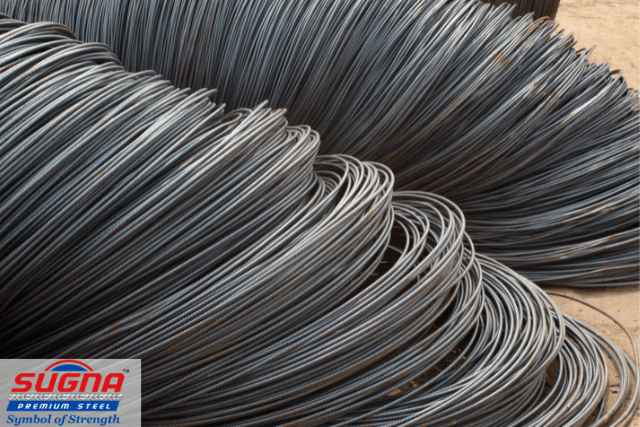Hey there, buddy! Are you trying to navigate the complex sea of steel types and grades? Feeling a little overwhelmed? Don’t fret. Let’s break it down together, shall we? Today, we’re diving into the difference between two commonly used grades in construction: Fe 415 and Fe 500 steel. Buckle up and let’s go!
A Quick Steel Primer
Before we delve into specifics, let’s start with the basics. Steel is an alloy (a blend) of iron and a smidge of carbon, alongside other elements in smaller quantities. Its strength and other properties can be adjusted by tweaking its composition, creating a variety of steel grades. The ‘Fe’ in Fe 415 and Fe 500 stands for Ferum, which is Latin for iron, and the numbers denote the yield strength.
Understanding Yield Strength
‘Yield strength’, now there’s a term that can sound a little intimidating, right? But, it’s pretty straightforward. Yield strength refers to the amount of stress that can be applied to a material (in this case, steel) before it starts to deform permanently. Think of it like the ‘tipping point’ for the material. Higher the yield strength, more is the stress it can withstand before it starts to bend or stretch permanently.
Fe 415 Steel
Fe 415 steel is a high-strength structural steel with a yield strength of 415 N/mm². This means it can withstand stresses up to 415 Newton per square millimeter without experiencing permanent deformation. This steel grade is commonly used in residential buildings because it balances strength and flexibility.
Fe 500 Steel
On the other hand, Fe 500 steel has a yield strength of 500 N/mm². This gives it a higher load-bearing capacity, making it suitable for structures that demand more strength. However, the increased strength comes with a slight compromise in ductility, meaning it may be less flexible and slightly more brittle than Fe 415.
Fe 415 vs Fe 500: The Key Differences

So, let’s sum up the key differences:
| Property | Fe 415 Steel | Fe 500 Steel |
|---|---|---|
| Yield Strength | 415 N/mm² | 500 N/mm² |
| Ductility | More ductile (more flexible) | Less ductile (less flexible) |
| Common Usage | Residential construction | Commercial buildings, bridges, etc. |
| Cost | Generally less expensive | Generally more expensive due to higher strength |
| Resistance to Seismic Forces | Better due to higher ductility | Less due to lower ductility |
- Yield Strength: Fe 500 has a higher yield strength than Fe 415, making it capable of withstanding higher stress without deforming.
- Ductility: Fe 415 is more ductile than Fe 500, making it more flexible and better at handling dynamic loads and seismic forces.
- Usage: Fe 415 is often used in residential construction, while Fe 500 is typically used in commercial buildings, bridges, and other structures that require higher strength.
FAQs
Can Fe 500 steel be used in residential construction?
Yes, it can be used. However, its higher strength and lower ductility need to be considered in the design phase.
How is yield strength determined?
Yield strength is determined through a process called a tensile test, where a sample of the material is stretched until it deforms.
Does Fe 415 steel cost less than Fe 500?
Generally, yes. Fe 415 is often less expensive than Fe 500 due to its lower yield strength.
What does ‘Fe’ stand for in steel grades?
‘Fe’ stands for Ferum, the Latin word for iron.
How can I tell the difference between Fe 415 and Fe 500 steel?
Often, the grade of the steel is marked on the bars by the manufacturer. However, for a detailed analysis, laboratory testing may be required.
Conclusion
Both Fe 415 and Fe 500 steels have their places in construction. The choice between the two depends on the specific requirements of the project, including the expected loads, environmental conditions, and safety considerations. Remember, understanding your materials is a key step in successful construction projects!

